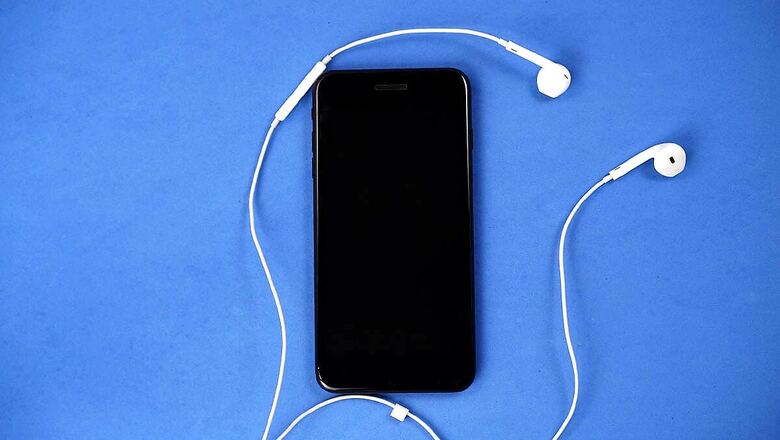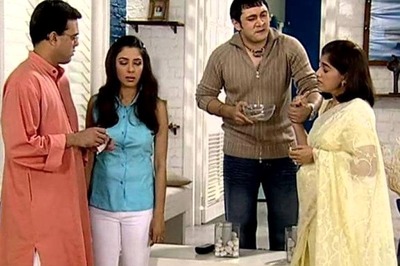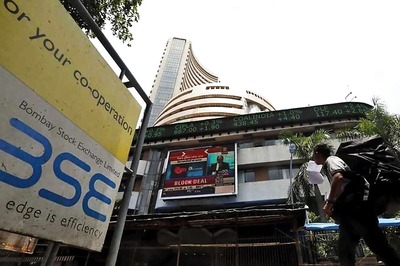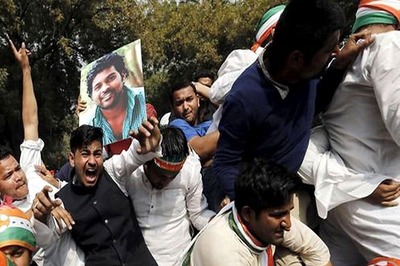
views
Access to music has become seamless thanks to the internet. Today you can listen to any song, almost anywhere, and in most cases, for free. There are tons of music streaming apps to choose from and then there is also YouTube. Don’t wish to manually search for a song, no worries, just ask your digital voice assistant at home or on your smartphone to play the song of your choice. It has become quite easy.
Life wasn’t so simple back in the 90s. You either had to tune in to the radio or go out and purchase tapes or CDs. I still remember buying Eminem’s 8-Mile in 2002, probably the last tape I ever purchased. The transition from physical storage media to digital formats mostly relied on the internet and of course, the wide adoption of the MP3. Not sure how many of you did this, but compressing songs to lower bitrates just so that they could fit onto the tiny storage of mobile phones was my thing.
Now the MP3 is actually a digital audio coding format that was made in 1993. It was widely adopted due to its small size and acceptable fidelity especially at a time when bandwidth and storage were not cheap. Soon enough, we saw numerous MP3 CDs and music players piling up the markets. Of course, the internet being the internet, became the perfect stage for piracy, unlicensed sharing of music as well as numerous copyright infringement cases. Who can forget the infamous Napster controversy? It was a big moment in the history of music and the internet. Using peer-to-peer file-sharing technology, Napster allowed people to share MP3 files with other users. The company was later sued by the acclaimed heavy metal band Metallica followed by rapper and producer Dr. Dre. Eventually, Napster shut down in 2001 after losing the case where various musicians and recording studios sued the company on the ground of contributory and vicarious copyright infringement under the US Digital Millennium Copyright Act (DMCA).
One of the biggest technologies that allowed platforms like Napster to thrive in the early 2000s was peer-to-peer (P2P) sharing. Remember Limewire? No? How about Torrents? Theoretically, a very simple concept, P2P sharing allows files on your PC to be shared with other people using the internet. One could access these files through P2P software that would search for other connected PCs on a P2P network to locate the desired content. The problem was, P2P was majorly being used to share illegal and pirated content including movies, music, video games and whatnot. This also gave hackers a perfect pathway to spread malware and infect numerous PCs in one go.
Despite internet regulations, P2P based software still exist. However, the arrival of music streaming apps and services have entirely changed the way we consume music today. Local players like Gaana and Saavn (now JioSaavn) took the early advantage in India and started offering Bollywood, regional, and various other music categories under affordable as well as free tiers. However, they only started to gain traction in the market with the introduction of the Jio SIM in 2016 that led to the massive adoption of the internet due to its low data rates. This was soon followed by Google, Apple, Amazon, and Spotify entering the Indian market with premium, yet fairly affordable options compared to the global pricing.
According to the Indian Music Industry (IMI), the representing body for record labels in the country, there are 200 million unique subscribers of these apps. These figures are from February 2020, right before the pandemic, which means that the numbers today are presumably much higher. During the same period, Gaana had recorded over 150 million monthly active users while JioSaavn had more than 100 million active users in India. Spotify, which is known to be one of the biggest music streaming names globally, managed to get two million users in just a month of its launch in India back in 2019.
Despite having impressive numbers, the music streaming industry in India is still not at its full potential. While there are a few people who are ready to pay for premium services, the majority still prefers free access even if they deal with annoying ads, since it's a really small price to pay. In fact, free access to music is so popular in India, that one of the most popular channels on YouTube is Bollywood music label, T-series. That’s not all, Indian Music Industry (IMI) published a report last year suggesting that 67 percent of people in India still listen to pirated music which is way above the global average of 27 percent. A majority of those who are not pirating music, still rely either on the radio or just go to YouTube to listen to songs. This essentially means music streaming services are going to continue gaining more attraction in the country in the coming years. There is still a vast population that is unaware of the concept of such apps, let alone people who don’t even have the internet.




















Comments
0 comment